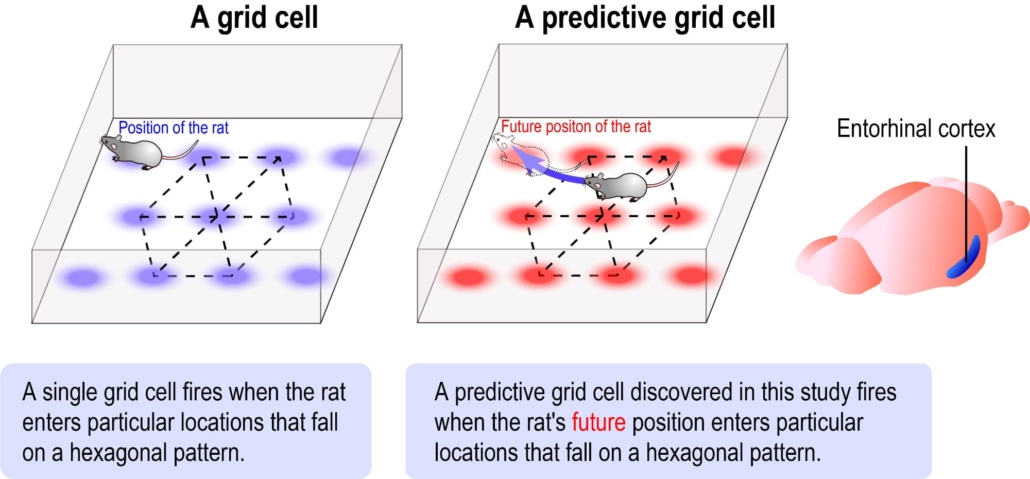Researchers discover brain region that plans future locations
Researchers at the RIKEN Center for Brain Science in Japan have identified a new type of grid cell in the brain that predicts an animal’s future position, shedding light on how we navigate a spatial environment.
The team of scientists identified a region of the brain that encodes where an animal is planning to be in the near future. This finding, published 15 Aug 2024 in the journal Science [1], provides crucial insights into the mechanisms of spatial navigation and could have implications for our understanding of brain function.
Much of this kind of information is contained in cells within two connected parts of the brain – the hippocampus and the medial entorhinal cortex, or MEC for short – which are extremely similar in all mammals, from rats to humans. In particular, the MEC contains maps of an animal’s current location in space, a discovery that won the Nobel Prize for Physiology or Medicine in 2014.
The study, led by Shigeyoshi Fujisawa and Ayako Ouchi, focused on the MEC. While previous research had established the MEC’s role in mapping current locations, this new study reveals its capacity to predict future positions.
Predictive grid cells
The researchers conducted experiments with rats traversing an open square field in search of water. By recording the animals’ movements and simultaneously monitoring the activity of individual brain cells in the MEC, they made a remarkable discovery. Some cells in the MEC created an internal grid that mapped future positions within the field.
These newly identified neurons, which the researchers have dubbed ‘predictive grid cells’, behave differently from the previously known grid cells that encode an animal’s current location. For instance, a predictive grid cell might become active when a rat is 30 to 40 centimetres away from a specific location, regardless of the direction from which the rat is approaching.
Distance versus time
In follow-up experiments, the team sought to determine whether these predictive grid cells encoded future locations in terms of distance or time from the present. Their findings revealed that both factors were encoded, although the ‘gridness’ of the cells was more pronounced when considering distance.
Interestingly, the predictive grid cells faithfully encoded future positions in various situations, including goal-directed behaviour and random foraging. This suggests that the function of these cells is not limited to specific types of navigation but may be a fundamental aspect of spatial cognition.
Implications for spatial navigation and memory
Fujisawa emphasised the significance of their findings: “This study provides important insights into the mechanisms of spatial navigation and episodic memory formation in hippocampal and entorhinal cortical circuits.”
The discovery of predictive grid cells adds a new dimension to our understanding of how the brain plans and executes spatial navigation. It suggests that the brain is constantly creating and updating maps of potential future locations, allowing for more efficient and flexible navigation through complex environments.
Future research directions
While this study marks a significant advance in our understanding of spatial cognition, it also opens up new avenues for future research. Fujisawa and his team plan to look into the mechanisms underlying the organisation of predictive grid cells.
Understanding how these cells are formed and integrated into existing neural circuits could provide valuable insights into the broader functioning of the brain. It may also have implications for conditions that affect spatial navigation and memory, such as Alzheimer’s disease.
The discovery of predictive grid cells in the medial entorhinal cortex represents a significant leap forward in our understanding of how the brain navigates through space. By revealing a neural mechanism for planning future locations, this research not only enhances our knowledge of spatial cognition but also provides a foundation for further investigations into the complexities of brain function.
Reference:
- Fujisawa, S., & Ouchi, A. (2024). Predictive grid coding in the medial entorhinal cortex. Science. https://doi.org/10.1126/science.ado4166


